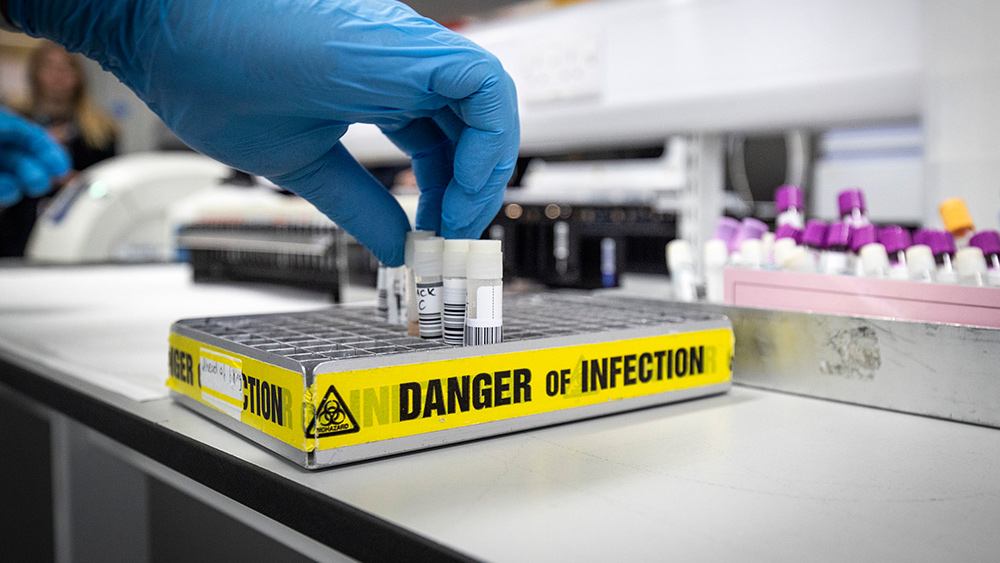
China has refused to provide the World Health Organization (WHO) with raw data on early Wuhan coronavirus cases. The global health body said Chinese authorities have turned down requests to provide data on 174 COVID-19 cases dating back to December 2019. China's information is of huge help to WHO investigators examining how and when the coronavirus first began to spread in the country. Investigators finished their month-long scrutiny on the matter during the week of Feb. 12.
WHO experts said Chinese officials and scientists provided their own extensive summaries and analyses of COVID-19 case data. They also supplied aggregate data and analysis on retrospective searches through medical records in the months leading to the Wuhan coronavirus pandemic. Ultimately, Chinese health authorities claimed that they found no evidence of the virus.
But the WHO team was prohibited from viewing the raw data behind those retrospective studies. Member states of the global health body typically provide such data in a disaggregated yet anonymized form. This is to permit investigators to see all other relevant details on each case – part of standard WHO procedure. Access to the data would allow WHO team members to conduct their own examination on how early and how extensively the Wuhan coronavirus began to spread across China.
Australian microbiologist and WHO team member Dominic Dwyer said: "They [Chinese authorities] showed us a couple of examples, but that's not the same thing as doing all of them – which is standard epidemiological investigation." He continued: "The interpretation of data becomes more limited from our point of view, although the other side might see it as being quite good."
Dutch virologist Marion Koopmans, another WHO team member, said the team's Chinese counterparts had performed extensive work involving hundreds of investigators from several institutes. She added that the WHO investigatory team could attempt to obtain information later given their limited time in China.
Meanwhile, both China's Ministry of Foreign Affairs and National Health Commission did not answer The Wall Street Journal's request for comment. (Related: China blocks WHO investigation team probing coronavirus origins from entering the country.)
China's refusal to provide key information muddles ongoing investigation into coronavirus' origins
Dwyer said the lack of transparency on China's part when it came to the raw, personalized data on the 174 early Wuhan coronavirus infections and other potential cases prior to December 2019 led to heated discussions. By the time the WHO team left Wuhan, no agreement to provide raw data had been reached with China.
Danish epidemiologist Thea Fischer said Feb. 9 that she found no inconsistencies in the available data from Wuhan. But she noted that a deeper analysis would be impossible without the raw data, adding that other countries would provide it right away. "Sometimes, emotions have really run high. I am a scientist and I trust data. I trust documented evidence based on data, [and] I don't just trust what anyone tells me," the WHO team member remarked.
The WHO delegation to Wuhan aimed to probe if COVID-19 was already spreading in China before early December 2019. Chinese authorities reported the first patient in the country who experienced COVID-19 symptoms that month. If the Wuhan coronavirus was detected earlier, necessary actions would have been done to curtail its spread before it became a pandemic that has claimed more than 2.3 million lives as of writing.
Meanwhile, team leader Peter Ben Embarek said Feb. 9 that the virus most likely jumped to a human from an animal, and may have entered China by means of imported frozen food. He said the virus coming from a laboratory and being released via accident was "extremely unlikely." (Related: No surprise: WHO kowtows to communist China, announces the virus didn't come from the Wuhan lab.)
The Chinese government welcomed the WHO delegation's findings and urged other countries such as the U.S. to invite the global health body for similar probes. However, the U.S. called for greater transparency and said it wanted to see data obtained from the WHO investigation.
White House Press Secretary Jen Psaki said the Biden administration plans to scrutinize data from the probe in an "independent review." The press secretary told reporters during a Feb. 9 briefing that the administration had no hand in the WHO's planning and implementation of the Wuhan problem. Psaki added that even though the U.S. had rejoined the WHO, it is still "imperative that [the U.S. has its] own team of experts on the ground" in China.
Embarek said the WHO's findings in Wuhan are expected to be summarized after a week, with a full report to follow.
Visit Pandemic.news to read more about China's concealment of key data on the origins of the Wuhan coronavirus.
Sources include:
Please contact us for more information.



















